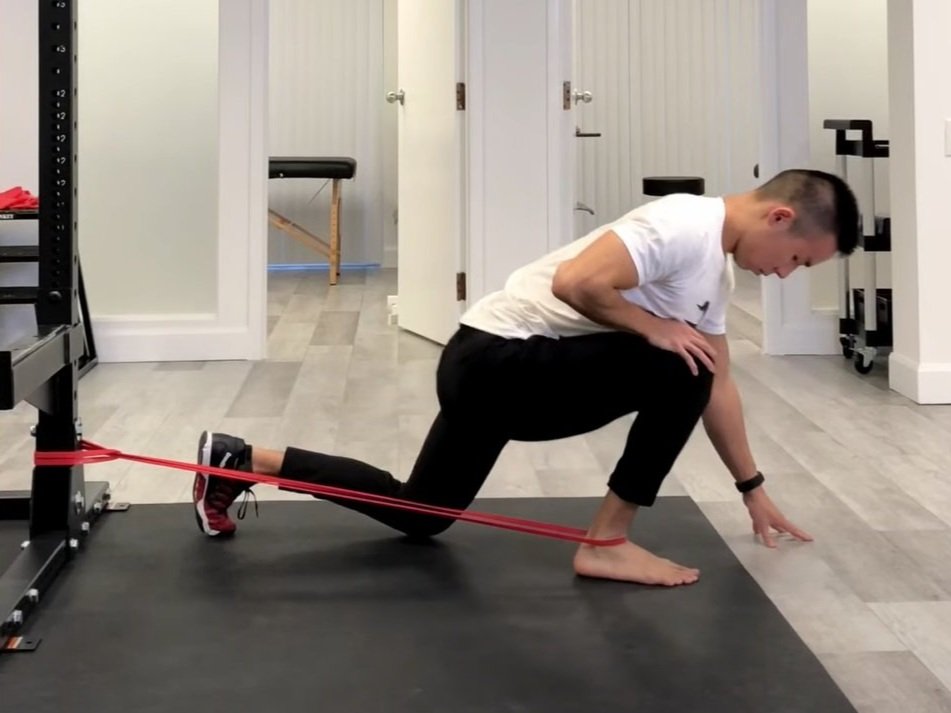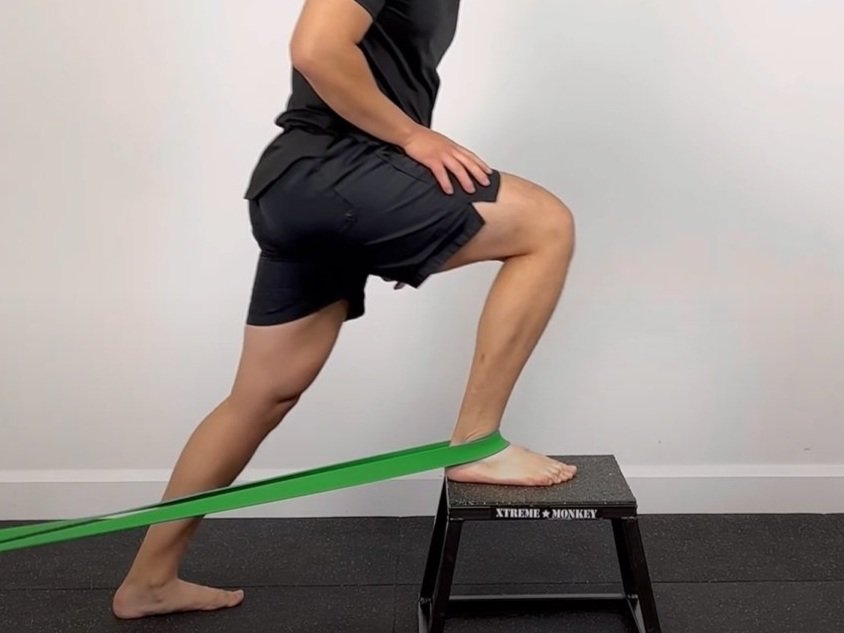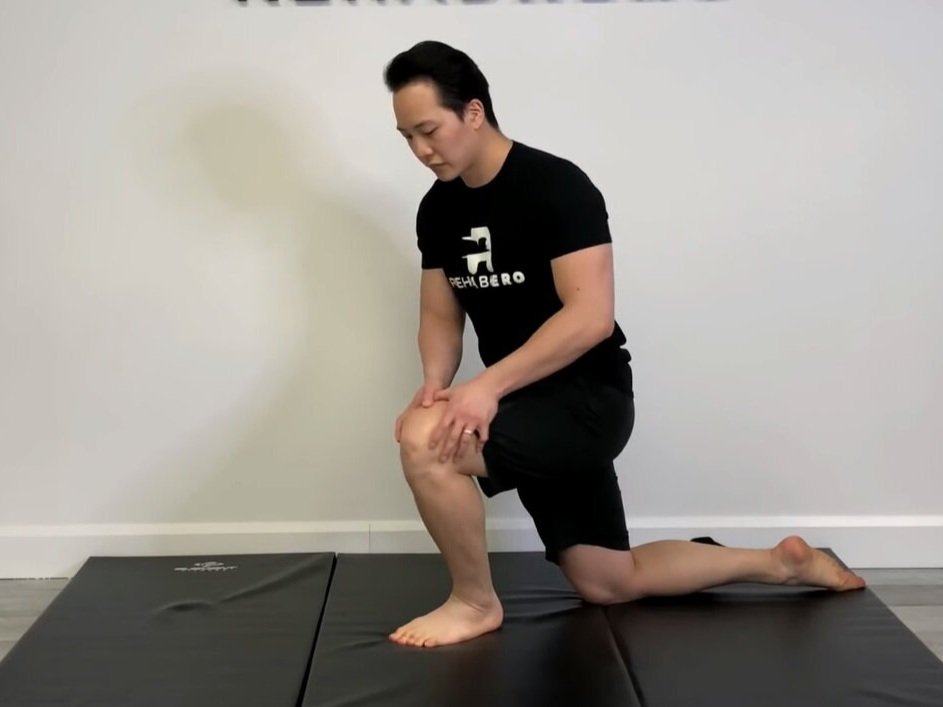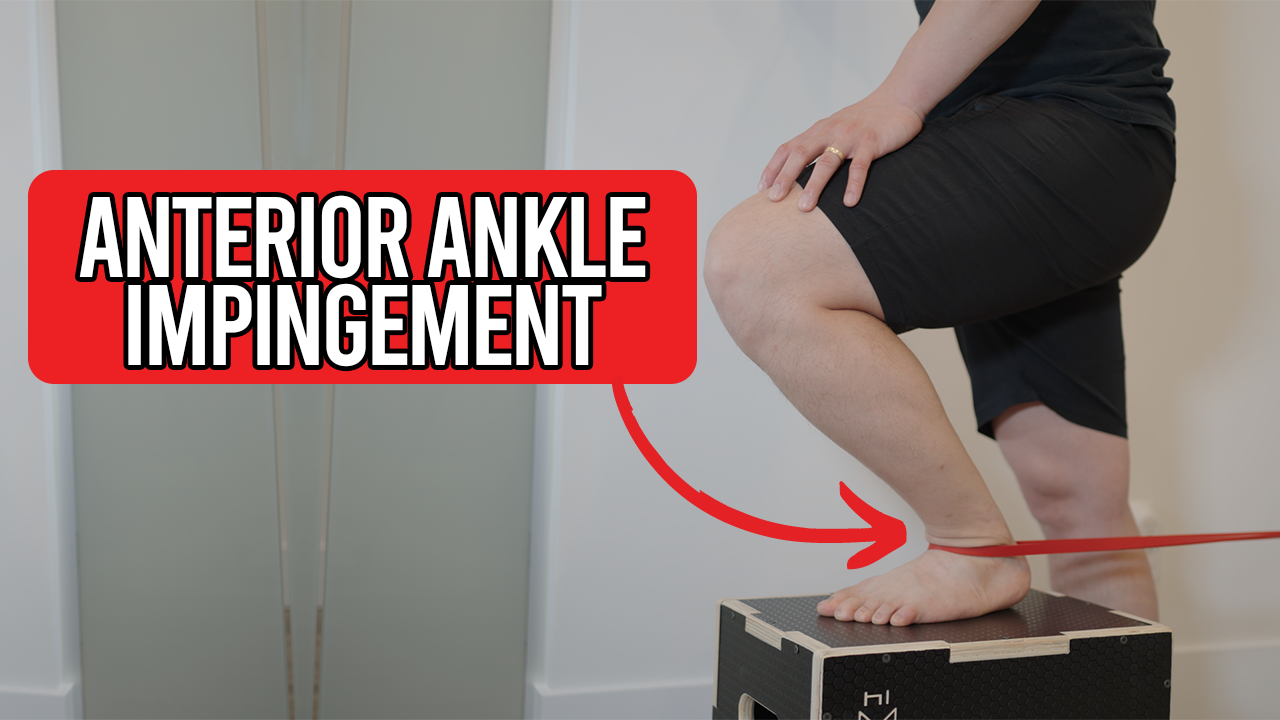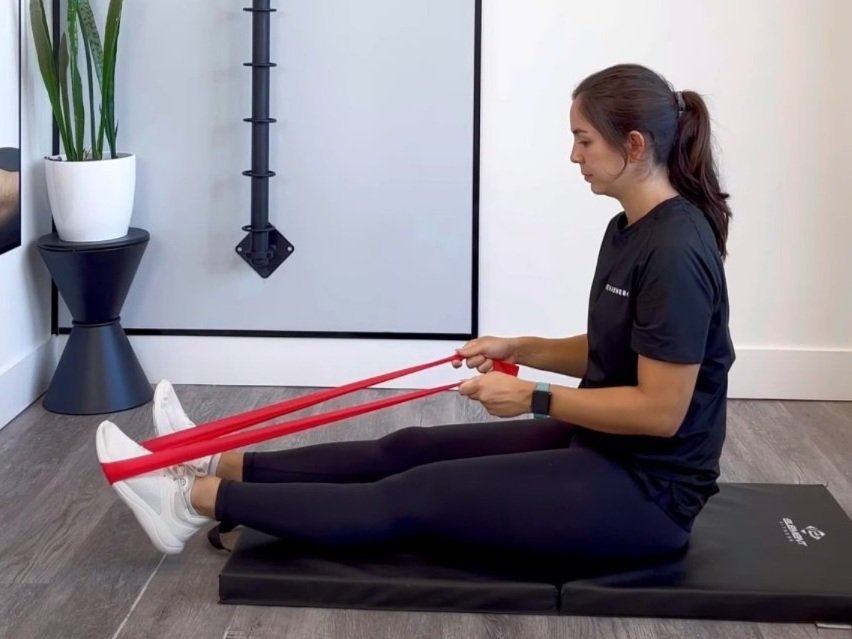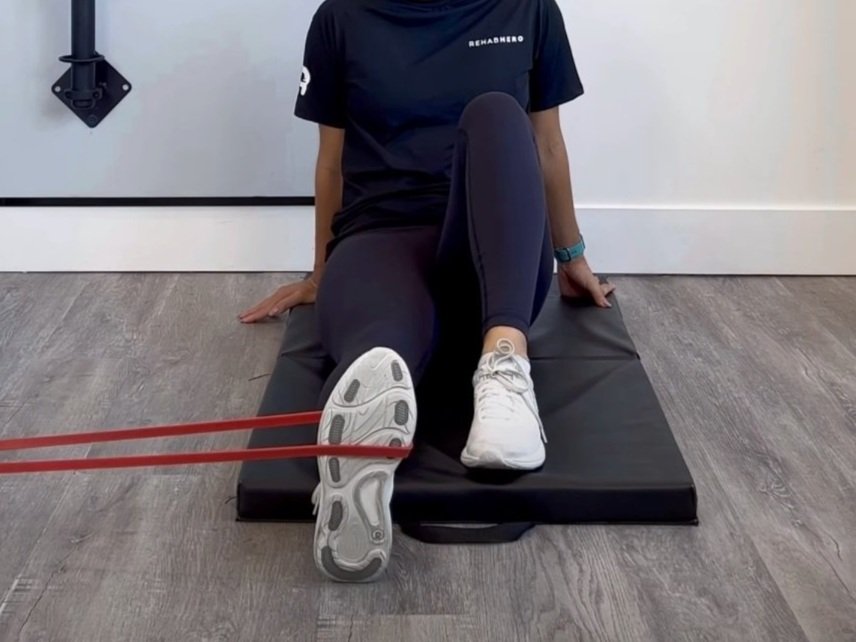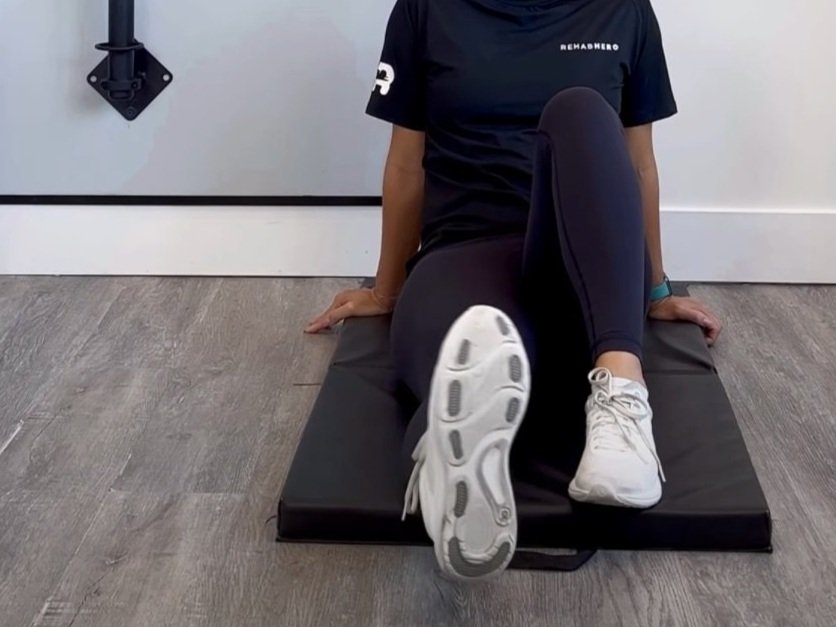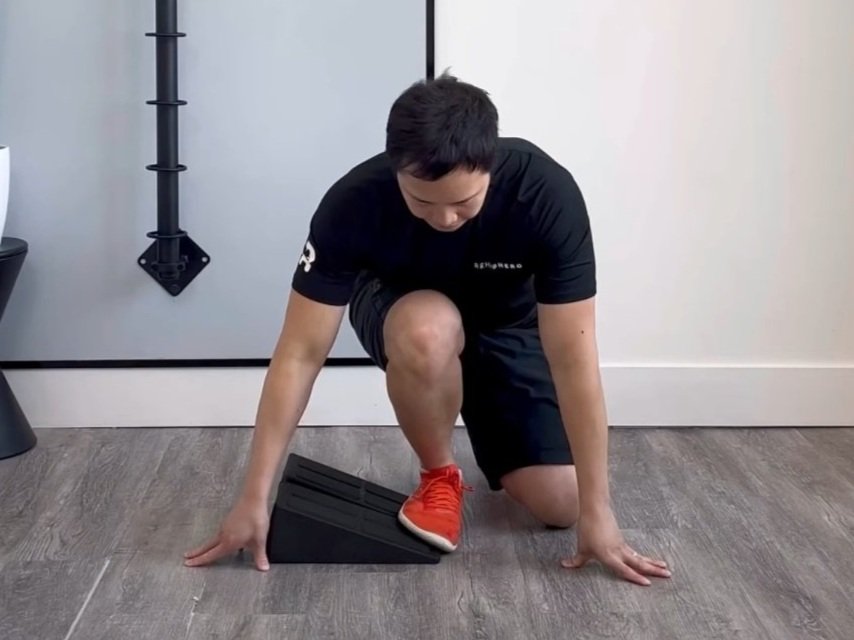Anterior Ankle Impingement
A common cause of ankle and foot pain
Learn about how this ankle condition can be limited your ankle mobility and be the cause of your pain.
What is causing pain at the front of my ankle?
If you have pain at the front of your ankle or top of your foot it might be a painful condition called anterior ankle impingement. It may feel like a sharp pain or pinching pain especially during activities like running, squatting or lunges. At times it can even affect normal activities like going up or down a set of stairs, and cause irritation of the tendons that attach from the shin to your foot. Luckily this condition can be managed conservatively through a combination of physical therapy, joint mobilization, and rehabilitative exercises.
Ankle impingement is a condition that is occurring at what we call the tibiotalar joint. The tibiotalar joint is formed between a bone found in the foot called the talus and a bone in your shin called the tibia. In anterior ankle impingement the talus can sometimes be shifted anteriorly or translated forwards slightly leading to decreased space in the front of the ankle and increased impingement of the soft tissues including the ankle extensor muscles and tendons. You could get sensitization or pain in your extensor ankle muscles as it can get pinched right between these two bony surfaces.
This anterior translation of the talus could also limit the amount of ankle dorsiflexion you have. Ankle dorsiflexion is when your foot moves closer to your shin bone. As a result, this can limit your range of motion during exercises like the squat or lunge. In today’s blog we'll be going over ankle mobility exercises that specialize in increasing ankle dorsiflexion. We've got two main exercises today for increasing range of motion and you could do them sequentially or if you find just doing one of them is good enough for you, you can stop it there. Lets get this started!
Exercise 1: Banded Ankle Dorsiflexion
The first exercise that we'll be doing is called a Banded Ankle Dorsiflexion exercise. The really important thing when you're doing this exercise is to use an exercise band called the monster band or pullup assist band. Unfortunately you can't really use any other type of band for this type of exercise. Keep reading to see how to increase ankle dorsiflexion mobility.
Start by looping the band around the front of the ankle joint so you're targeting the talus bone. We want to try to get this bone as we want to assist it in posterior translation or backwards movement within the ankle joint. Once looped around the ankle, make sure to anchor the other end behind you onto something stable like a squat rack or if you have a friend you can just get them to hold it as well. On your ankle you have two bony prominences on the inside and outside of the ankle, these are your malleoli. You're going to make sure the band is below it in order to make sure the band is on the talus and not on the shin (tibia).
Next you're going to put your foot on a surface that's on the same level of where your anchor point is. If your band is anchored closer to the floor you can just do this exercise on the floor, or if your anchor point is higher use something like a plyobox to elevate the foot off the ground. From there make sure that it has a decent amount of tension as it will be needed to pull that talus backwards. Take your knee and just lean forwards into an ankle dorsiflexion position. Rock back and forth to allow the band to help your ankle get deeper into the movement.
When you're doing this exercise you should find that the band actually takes away the sharp pain or that the pinching pain reduces as your ankle warms up. If you find that it's not really taking away that sensation enough you can just slide a little bit further forward so that the band has a little bit more tension on the talus bone. You can do anywhere between 10 to 20 repetitions while taking it nice and easy. You should find that your ankle dorsiflexion increases as you continue to do this exercise. Generally you only need to do one set. You could do this exercise daily or as a warm-up before you do your athletic activities.
Exercise 2 - Ankle Scours
The main goal with this exercise is to kind of create more movement going through the joint by leveraging the weight of our body and shin on that talus bone. Set up a space so that you have a padded surface on the floor for the knee. Go into a half kneeling position but keep your legs relatively close together as you'll be leaning forwards during this exercise. Lean forwards until you reach the end range of motion of your ankle dorsiflexion. From there you're going to do what's called a scour. Move the knee in a rainbow or crescent shaped movement (arc motion or half circle motion with the knee). At a certain angle you'll feel a pinching sensation at the front of your ankle.
Once you've identified where that range of motion is you're going to lean forwards into that same direction while wiggling your knee back and forth. Through this motion we are aiming to use your shin to wedge that talus bone posteriorly within the ankle joint. Continue doing it until the pinching sensation that you had on the front of your ankle joint disappears. Generally it usually takes about 10 repetitions. Once you’ve completed a set, return to a neutral position to give yourself a brief break. After taking a 20-30 second rest, you're going to repeat this another three to four times in total. You should find that when you go back into this deep ankle dorsiflexion motion your range of motion should have improved. You should notice that your knees go past your toes a little bit further with each set.
When you begin your next set do another ankle scour. You might find that a new angle is now a little bit more uncomfortable than the previous angle. If you do, just repeat this motion in the new angle and be sure to keep your heel flat on the floor while you're doing this. After roughly 10 repetitions your discomfort will disappear at this new angle. If so, back off and repeat again another two times.
That wraps up this exercise! After completing these two exercises you should actually find that you'll be able to run, jog, squat, and/or lunge with fewer issues. If you find that you're not actually responding to these exercises I highly recommend that you get assessed by a healthcare professional to understand what's going on in your ankle joint. You might not be suffering from this condition as the results from these exercises should be fairly immediate, with short-term gains experience right away.
It might take a few weeks of consistent mobility work before your baseline ankle dorsiflexion levels improve. Once your baseline has improved you will no longer have to rely on these exercises to improve your range of motion. These exercises should be done daily so that you can increase the mobility of the ankle joint. If you don't do it regularly you might not be consistent enough to get those long-term gains and you may need to rely on this as a warm-up.
Once you've attained the ankle range of motion that you need to do your activities without any issues it's generally still ideal to do these exercises once a week so that you can maintain the mobility gains that you worked so hard to gain. If you found these two ankle mobility exercises actually did help to improve your ankle impingement symptoms let me know in the comments below!
Watch the full ankle mobility tutorial below:
Written by Dr. David Song
Dr. David Song is a chiropractor that practices in the center of North York. He focuses on helping his patients improve their functional movements so that they can be as independent as possible. With an interest in strength athletes, he helps his patients recover from pain and get performance gains at the same time.


